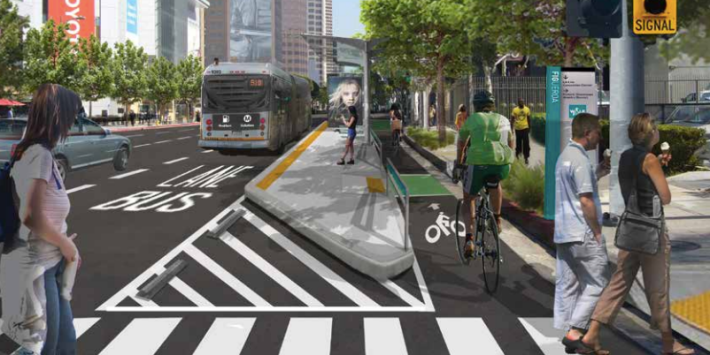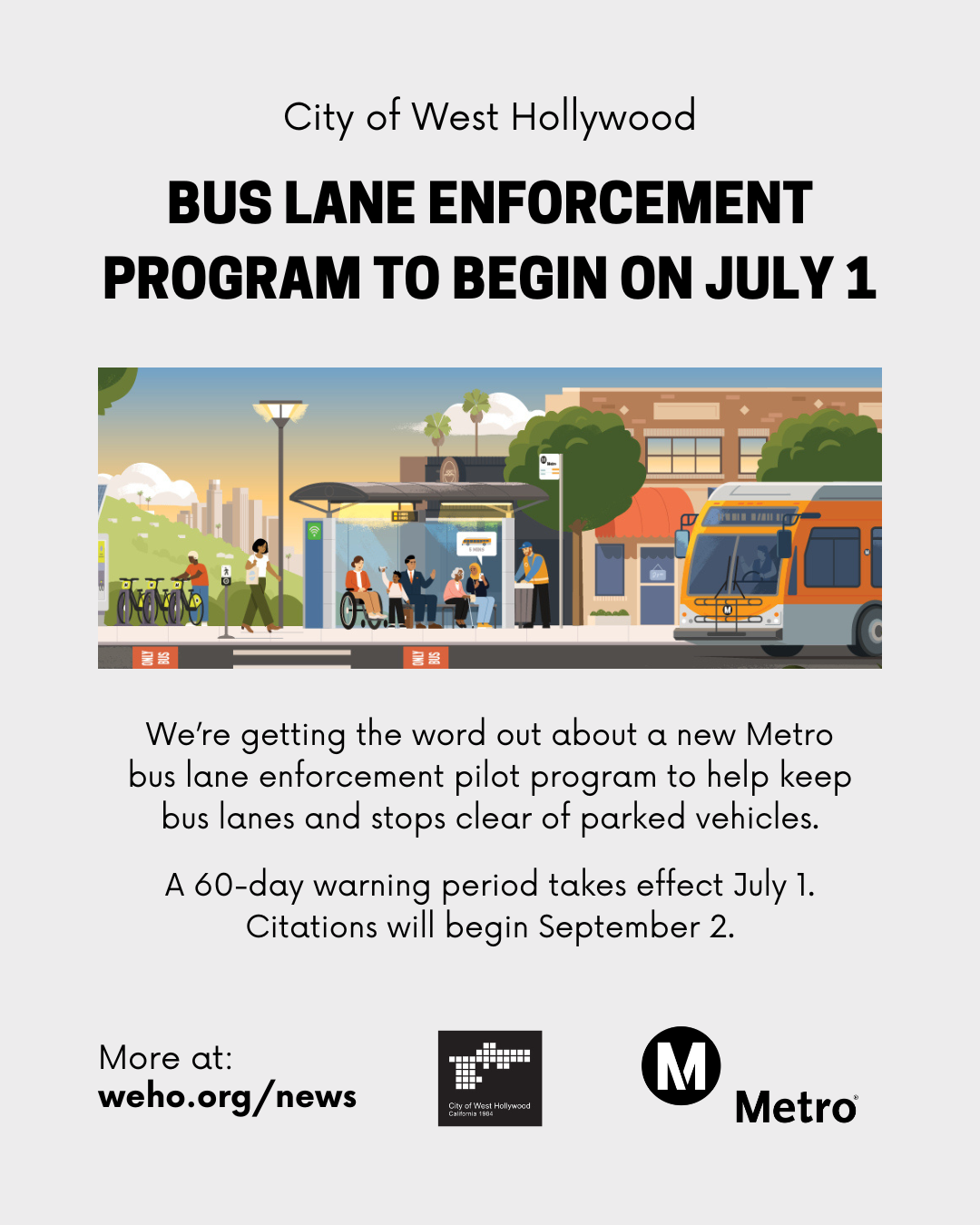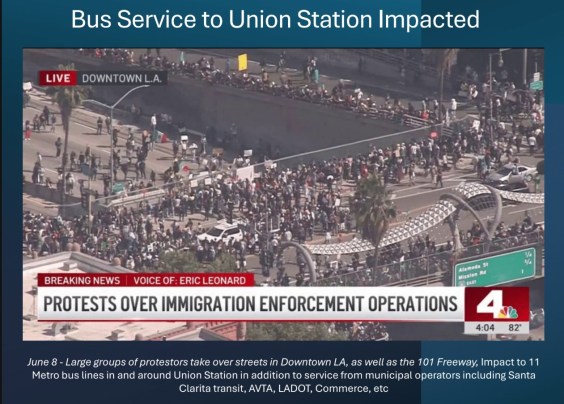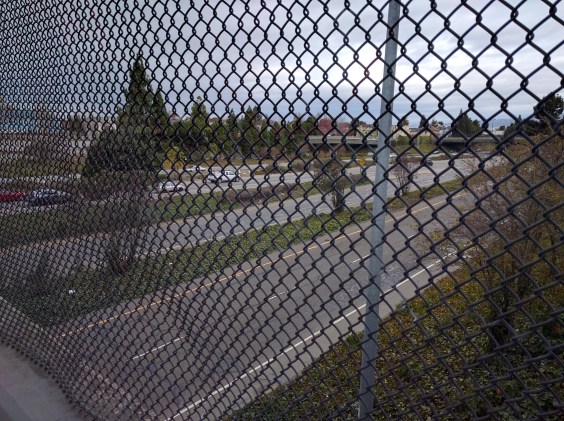
Three California counties are considering transportation sales tax initiatives for the upcoming November ballot. Los Angeles Metro just announced its proposed expenditure plan today; Contra Costa is working on a draft proposal, and Santa Clara county has developed a scoresheet to help prioritize potential projects according to agreed-upon goals. Sacramento, Stanislaus, and San Francisco have made some noises about possible sales tax measures as well.
The question is, are these long-term measures looking far enough into the future, or are they basing their plans on business as usual?
More than half of the money spent on transportation now comes from sales taxes. That's because of declining gas tax revenues and the lack of political will to raise them. And sales tax initiatives, like any tax measure, need approval by at least two-thirds of voters to pass. Alameda County's first try at Measure BB failed, and LA County's last bid to pass Measure R2 missed by a small number of votes. And the need for wide voter appeal also means that sales tax measures have to please many different constituencies. This can lead to grab-bags of projects that are thrown in purely for voter appeal, rather then a well-thought out program that reflects long-range plans or larger regional or statewide goals.
All of the proposed ballot measures so far are in very early draft form, and discussions continue. LA Metro just released its proposed expenditure plan for Measure R2.1 today; a final draft of the Contra Costa County's Measure J reauthorization is due next week or so. Santa Clara county's draft plan is due some time in April. Meanwhile, all three will need to be finalized and approved by the lead agencies by June so they can go on the November ballot.
After the jump is a quick recap of what we know about how these plans are shaping up. It's not just a question of how the funding pies are divvied up, but also what kinds of projects are prioritized.
LOS ANGELES COUNTY
Metro released its much-anticipated expenditure plan today, and it looks disappointing for biking and walking advocates. The original Measure R, passed in 2008, allocated no money for bike and pedestrian projects at all, but the new plan isn't a whole lot better, allocating only two percent directly for bike and pedestrian planning. There will be some more money going to bike and pedestrian projects from local project funds as well, but even if, as Metro CEO Phil Washington claims, that means that active transportation would get about "4.5 to 5 percent" from the overall pie, it falls far short of needs.
The LACBC and Investing in Place had recommended that at least 10 percent of the measure's funds go for walking, biking, and safe routes to school, and even the local Councils of Government had recommended 7 percent for bike and pedestrian projects. Eric Bruins of LACBC says that this plan is an opportunity to “put neighborhoods first by prioritizing safe and accessible streets and to connect these neighborhoods to the growing transit system with robust first/last mile access improvements and regional bikeways,” but if so it looks like a missed opportunity.
Transit receives the lion's share of the draft plan, and highway construction gets 17 percent.
CONTRA COSTA COUNTY
Bike East Bay was an active participant in the push to include active transportation funding in Alameda County's successful Measure BB in 2014, winning 12 percent of the measure for pedestrian and bike projects. Now the group is working on Contra Costa County's proposed Measure J reauthorization, which, like Measure BB, would increase the amount of the current sales tax and extend it to 2042, about seven years beyond its current sunset date. The draft expenditure plan currently allocates about five percent of its funds for active transportation—around $120 million out of a $2.4 billion package. Bike East Bay and its allies are pushing for 13 percent for active transportation, so here again there is a lot of work to do. By comparison, freeway projects are set to get around $500 million, or 21 percent of the funding from Measure J.
Contra Costa County has a number of innovative ideas buried in the fine print of its draft plan. For example, a proposed new grant program called the “Community Development Incentive” program is currently slated to receive six percent of the measure's funding. It is aimed at projects that promote the creation of jobs, housing, and transit-supportive communities, and could contain opportunities to make communities more walkable and bikeable.
Bike East Bay's Dave Campbell is especially excited about a draft proposal to frontload some pilot projects, one in each of the county's four subregions. This proposal would include funding for a marquee “complete streets” project that accommodates all users, including protected bike lanes, transit improvements, signal timing, smart ride share, “whatever you want to do to make it work,” in Campbell's words, without widening streets for cars.
SANTA CLARA COUNTY
Silicon Valley is in the midst of formulating a sales tax measure, with local cities weighing on what they would like to see included. According to Colin Heyne of the Silicon Valley Bicycle Coalition, several Peninsula cities voted to endorse an expenditure proposal that would include $500 million for bicycle and pedestrian projects, and the San Jose city council approved a package that would dedicate $400 million of the measure’s revenues to bicycle and pedestrian projects.
Meanwhile the Valley Transportation Authority is undergoing an official process, “Envision Silicon Valley,” to analyze proposed projects against a set of criteria that were agreed upon by the board and include safety, transportation choices, financial sustainability, sand transit expansion. The result is a very interesting ranking of projects [PDF] that scores a proposed countywide bicycle superhighway and the countywide bike and pedestrian plan higher than several highway expansion projects.
Whether that ranking ends up in a proposed ballot measure remains to be seen.
“It's a challenge to get people to have this vision of the future,” said Heyne. “This is a thirty-year measure; we're talking about tomorrow's projects. And we're also talking about statewide climate goals. We should be passing projects that support those. For example, San Jose has a goal to reach 20 percent bike mode share written into its plans. We can't get to these mode shift numbers without appropriately allocating our funding.”
The VTA, says Heyne, has been good about making sure that bicycle and pedestrian advocates have been included in discussions about where funding should go. But, he says, “there is a lot of negotiating left to do. There are a lot of interests that can be served by this finite amount of money.”
------
For all three sales tax measures, there are still lots of details to work out and other issues that need to be settled. Once the drafts are complete, the campaigns to get them passed with two-thirds vote will begin. So it's still very much in the air whether California communities can invest in truly transformational ways.
Are there other counties considering similar sales tax measures? Are there other considerations these plans should be taking into account?





